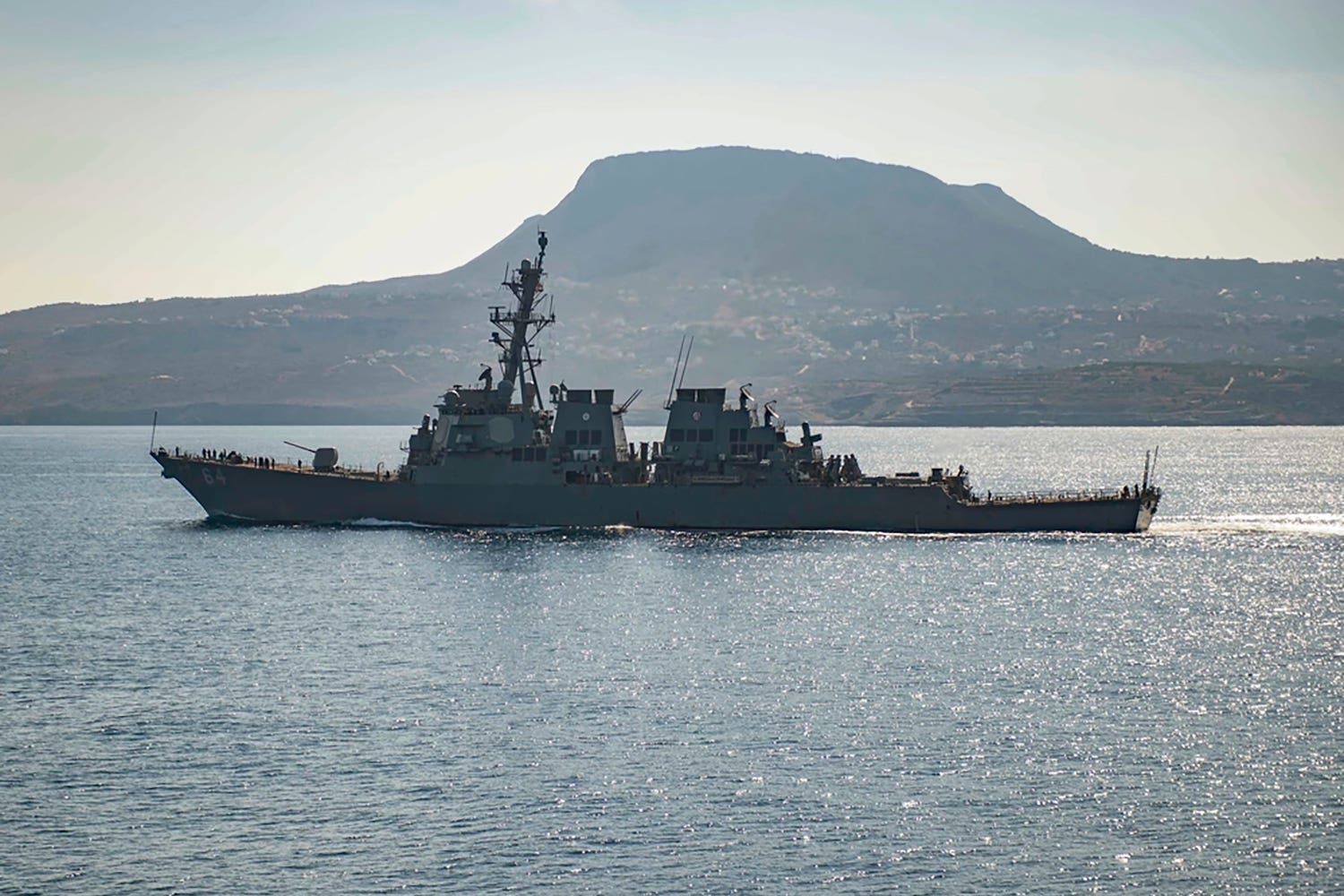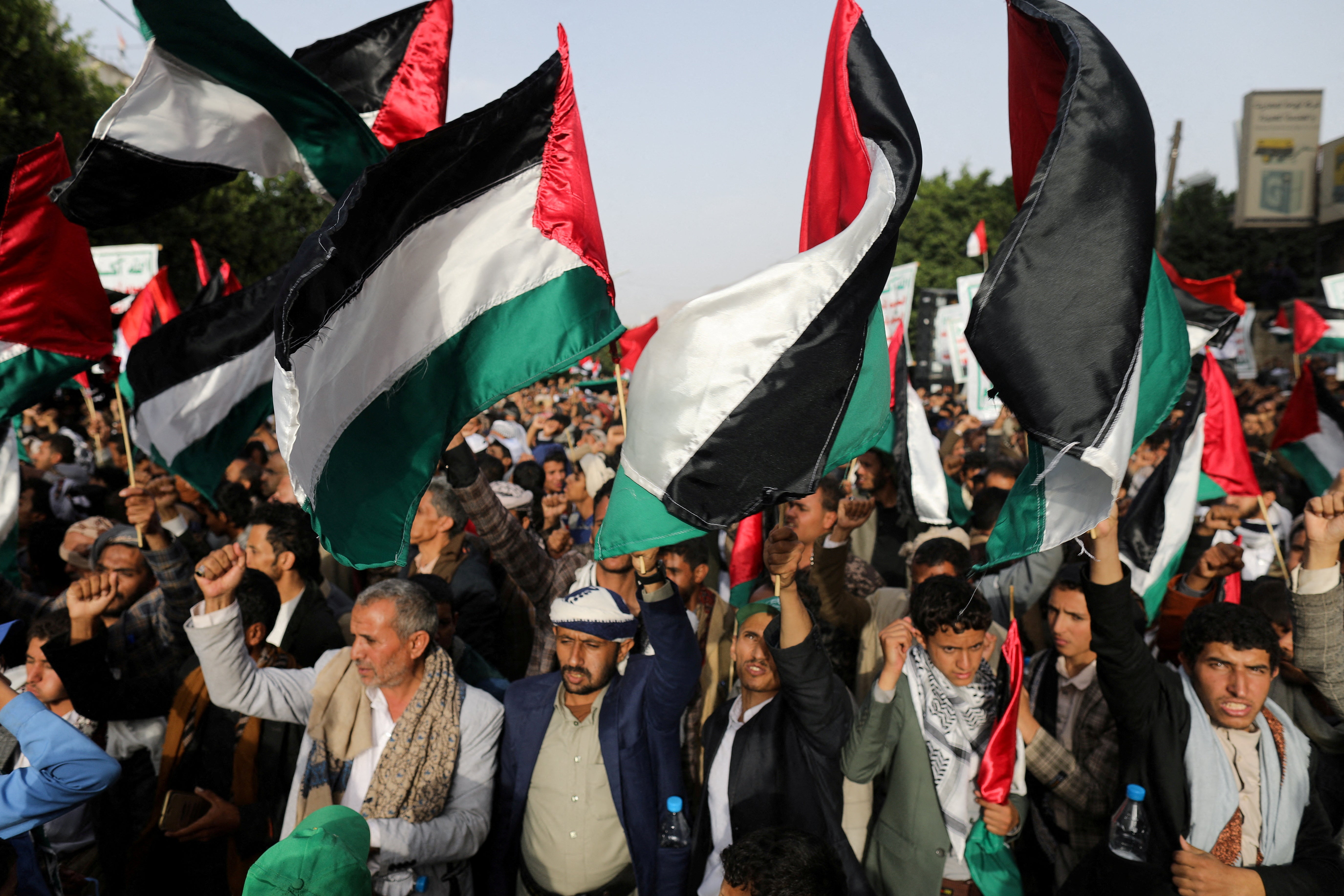Who are Yemen’s Houthis and why are they attacking ships in the Red Sea?
Yemen’s Shia Houthis are part of Iran’s ‘axis of resistance’ dedicated to the destruction of Israel
Your support helps us to tell the story
From reproductive rights to climate change to Big Tech, The Independent is on the ground when the story is developing. Whether it's investigating the financials of Elon Musk's pro-Trump PAC or producing our latest documentary, 'The A Word', which shines a light on the American women fighting for reproductive rights, we know how important it is to parse out the facts from the messaging.
At such a critical moment in US history, we need reporters on the ground. Your donation allows us to keep sending journalists to speak to both sides of the story.
The Independent is trusted by Americans across the entire political spectrum. And unlike many other quality news outlets, we choose not to lock Americans out of our reporting and analysis with paywalls. We believe quality journalism should be available to everyone, paid for by those who can afford it.
Your support makes all the difference.Tensions in the Middle East have risen after Iranian-backed Houthi rebels began striking at ships passing through the Red Sea in November.
Crews extinguished a fire on board a Marshall Islands-flagged vessel on Saturday after it was struck by a Houthi anti-ship missile in the Gulf of Aden, according to commodities trader Trafigura. It is the latest of more than 30 Houthi attacks in the past three months.
The Islamist group claims it is striking the Bab al-Mandeb Strait, which is a narrow strip of sea between Yemen and east Africa that is a key international trade route, in a bid to end Israel’s air and ground offensive against Hamas.
In retaliation, Britain and the US have launched air strikes across Yemen against Houthi forces.
President Joe Biden, speaking after the first round of strikes, said they were a “direct response” to an onslaught of attacks on Red Sea ships which “jeopardised trade, and threatened freedom of navigation”.
Mr Sunak said the action was “necessary and proportionate”.
About eight hours after the incident involving the Marlin Luanda, the US military destroyed a Houthi anti-ship missile that was aimed into the Red Sea and ready to launch, according to US Central Command.
The missile “presented an imminent threat to merchant vessels and the US Navy ships in the region,” it said.
The Houthis' Al-Masira television also said on Saturday that the United States and Britain launched two airstrikes that targeted the port of Ras Issa, Yemen's main oil export terminal.
But who are Yemen’s Houthi rebels? How are they linked to the conflict between Israel and Palestine, and why are they attacking western ships now?
Click here for live updates from the latest on the conflict.

“It’s clearly linked to a broader strategy of Iran, which is the main backer of the Houthis,” militant jihadist expert Dr Elisabeth Kendall told The Independent.
“It is designed to ramp up pressure on Israel, America and other allies to stop the war in Gaza. The Houthis are armed, sponsored and trained by Iran as part of the so-called axis of resistance,” Dr Kendall said.
The Houthis, formed in the late 1990s, developed as political-religious Shia movement and launched a series of guerrilla wars against Yemen’s national army.
The group seized the country’s capital of Sana’a when the Yemen civil war started in 2014, which caused neighbouring Sunni Islam Saudi Arabia to intervene at the head of a western-backed coalition over fears of growing Shia influence on its border. Since then, the civil war is estimated to have killed almost 400,000 people.
The takeover of the capital prompted Saudi Arabia to intervene in a bid to restore the internationally recognised government, which has a Sunni majority. A Saudi and UAE bombing campaign against Houthi targets was launched in 2015 and drew criticism over civilian deaths, leading to calls for the UK to cease arms exports to Saudi Arabia.
The Houthis have developed an arsenal including ballistic missiles and armed drones capable of hitting Israel more than 1,000 miles from Sana’a. The rebels have fired these missiles at Saudi Arabia dozens of times during the Yemen war. In September, the Houthis displayed anti-aircraft Barq-2 missiles, naval missiles, a Mig-29 fighter jet and helicopters for the first time.

Saudi Arabia and the US have accused Iran of “fully enabling” the rebel group to attack Israel and Western ships in the Red Sea. Iran denies the allegations, and says the Houthis are autonomous.
But experts say the Houthis, along with Gaza’s Hamas and Lebanon’s Hezbollah, form part of Iran’s “axis of resistance” - a military alliance built over four decades to oppose Israeli and American power in the Middle East.
Baraa Shiban, a Yemeni human rights activist who previously negotaited with the Houthis during failed peace talks in 2014, said it was clear in the decade since those talks that Iran has been supplying the militants with weapons.
“You have a situation where the Houthis have had a constant flow of weapons over the course of 10 years,” he told The Independent.
Citing a Houthi military parade last September as evidence of this, he said they “showcased a wide range of military capabilities”.
“If you know anything about how the Islamic Revolutionary Guards Corps (IRGC) operates,” he added, referring to the Iranian military, “you can see that those missiles and drones are basically mimics of Iranian weapons.”
The “axis of resistance” comprises a group of violent proxies across Yemen, Syria, Iraq, Iran, Lebanon and Palestine, coordinated by Iran’s Quds Force, the foreign arm of the IRGC.
The Quds Force’s aim is to export Iran’s 1979 Islamic revolution abroad. The US assassinated the former head of the Quds Force, Qassem Solemaini, in January 2020.
Lebanon’s Hezbollah, the most powerful group in the axis, boasts 100,000 fighters, has exchanged fire with Israeli forces since Hamas went to war with Israel and more than 70 of its fighters have been killed.
The US also says its troops in Syria and Iraq have been attacked at least 55 times by Iran-backed proxies since Hamas’s assault on Israel on 7 October.
The war has been viewed as a proxy in a wider conflict between Iran and Saudi Arabia as they both seek greater influence across the Middle East.

Join our commenting forum
Join thought-provoking conversations, follow other Independent readers and see their replies
Comments